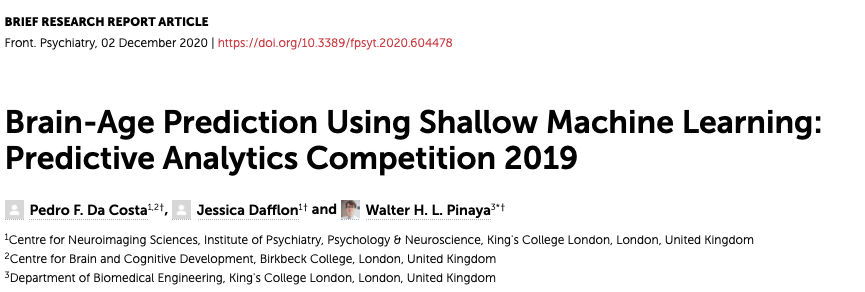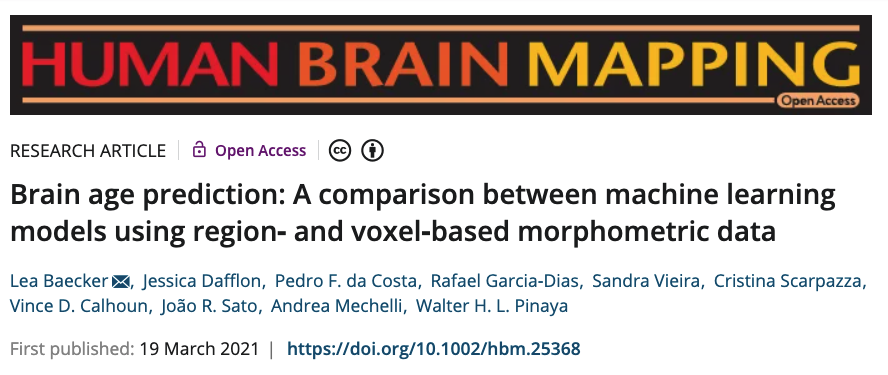 Photo by rawpixel on Unsplash
Photo by rawpixel on Unsplash
Despite the gain in popularity of deep learning methods across different fields (including neuroscience), it is still an open question if its performance can overcome classical methods in brain data, where the number of features is high and the number of samples is low. As deep learning methods have a higher tendency to overfit, classical machine learning methods such as Support Vector Machines, Relevance Vector Machines and Multiple Regressions have an important role in neuroscience research.
To test this point, I participated in an international competition to build brain-age models - Predictive Analytics Competition (PAC) 2019 - using only shallow machine learning models. Out of the 274 participants, our team finished in the top-10 most accurate models using an ensemble of shallow models. Our methods and approach are detailed in our paper:

In another study, we showed that there is no statistically significant difference between Support Vector Regression (SVM), Gaussian Process Regression (GPR) and Relevance Vector Regression (RVM), and that overall, the type of input data has a larger impact into the accuracy of the trained predictor.
